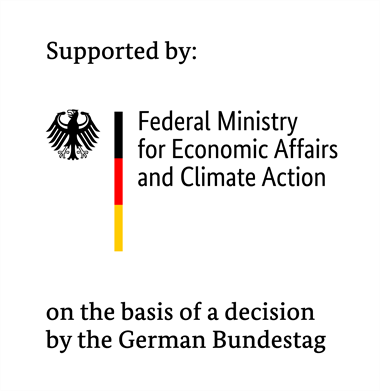Oxygen and Metals on the Moon
The exploration of the Solar System and deep space is one of mankind’s great scientific goals in the 21st century. Based on current technology roadmaps, a permanent human presence is expected to be established on the Moon and Mars in the coming decades. However, the construction and operation of extraterrestrial settlements will require a large amount of materials. The costs to supply all these materials from the Earth will be prohibitively high, despite immense technical advances in rocket technology.
For future deep space exploration and the establishment of a human presence on the Moon or Mars, the use of locally available resources is crucial. Every kilogram of mass that does not have to be transported from Earth saves enormous costs. The use of local resources is summarized by the term ISRU - In Situ Resource Utilization. To ensure economic viability, ISRU technology must be designed to be compact and lightweight. It must also be extremely energy efficient, require low maintenance, and use processing media such as gases or liquids in closed loops, since they cannot be replaced on site.
The ROXY (Regolith to Oxygen and Metals) process was invented by Airbus and has been developed since 2019 in cooperation between Fraunhofer IFAM Dresden, Airbus Defense and Space, and Boston University. It is an electrochemical process to extract high-purity oxygen from lunar regolith in an energy-efficient manner and without complicated gas-separation or purification systems. It has already been successfully tested on a laboratory scale. In a size- and weight-optimized form called MiniROXY, it has the ideal qualities for a lunar feasibility demonstration.
In a current project funded by the Federal Ministry for Economic Affairs and Climate Action (BMWK), a team consisting of Fraunhofer IFAM Dresden, Airbus Defense and Space and TU Bergakademie Freiberg is working towards a future lunar mission.
The team at Fraunhofer IFAM Dresden will continue to develop the central components of the system to improve efficiency and reliability. Methods for process diagnostics will also be developed. Within the first twelve months, Airbus plans to build the MiniROXY reactor, which will then be installed and commissioned at Fraunhofer IFAM Dresden. This will be followed by an extensive ground test campaign, in which process parameters for the future lunar demonstration will be investigated. This will enable the exploration of the technical limits of the process. Furthermore, valuable insights into the further development of the reactor for its future lunar use will be gained. In addition to the experimental work, a design for a future lunar demonstrator and a concept for a lunar mission will be developed. The team of the INEMET of TU Bergakademie Freiberg brings extensive experience in the design of metallurgical processes to the project and is also investigating terrestrial use cases for the ROXY process, with a view towards a more environmentally sustainable production of critical materials on earth.
The project partners will publish a Request for Ideas (RFIs) for further scientific cooperation on this website in early March 2024.
 Fraunhofer Institute for Manufacturing Technology and Advanced Materials IFAM
Fraunhofer Institute for Manufacturing Technology and Advanced Materials IFAM